Vegetables are awesome to grow and they will reward you with leafy greens and fruits. Some people think that growing vegetables is boring because the garden would just look green and empty.
Climbing vegetables will fill up your garden with their foliage, so you don’t have to complain that your garden looks empty.
Do you want to know which climbing vegetables you can grow? Read this article to learn about nine types of climbing vegetables.
Table of Contents
Types of Climbing Vegetables
Some cool and popular climbing vegetables to grow are:
1. Beans

- Scientific name: Phaseolus vulgaris (common beans)
- Height: 2-15 feet (depending on the variety)
- Preferred USDA zone: 2-11
Beans are popular garden plants. They are not just easy vegetables to grow, they are also beneficial for you and your garden.
Beans give you sweet and nutritious fruit and help enrich the garden soil with nitrogen.
To grow beans is easy; you just need humus-rich and well-drained soil. These crops are fast-growing and they do not need you to prune them, though some varieties will do better with something to climb on.
2. Cucumbers
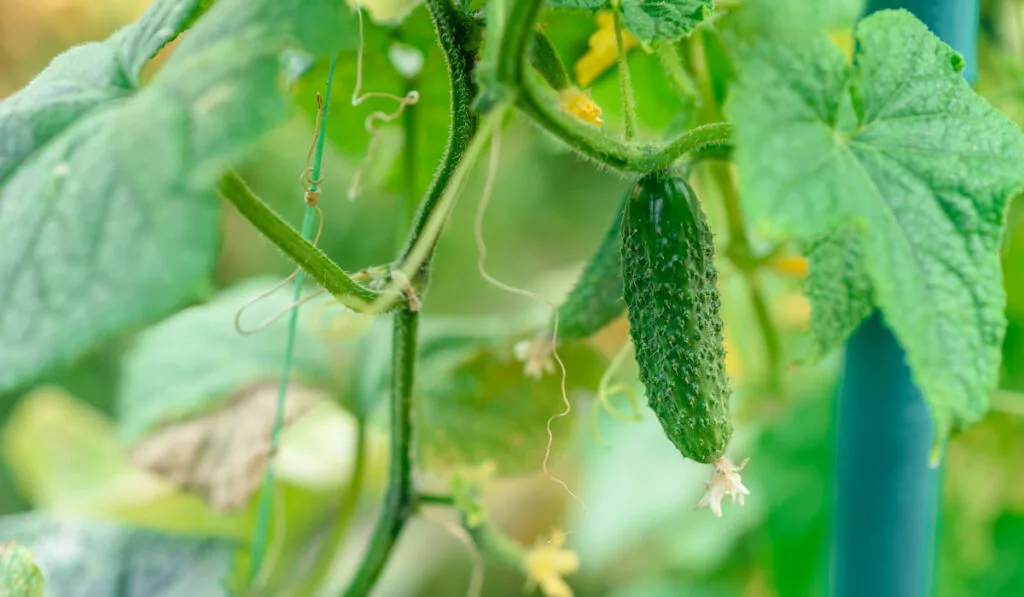
- Scientific name: Cucumis sativus
- Height: 3-12 feet
- Preferred USDA zone: 4-12
Cucumbers are also quite easy to grow. These vining plants will reward you with sweet fruits for salads, slicing, and pickle making.
Cucumbers need a trellis or structure for optimal growth. This is because pests often attack them easier when their leaves are in contact with the ground.
To grow cucumbers, you’ll need to fertilize them monthly. Also, make sure that their immediate soil is nutrient rich.
Cucumbers do not need pruning, as it can negatively affect their growth rate. If they are growing out of control, use your hands and some ties to change the vine’s direction.
3. Tomatoes

- Scientific name: Solanum lycopersicum
- Height: 2-6 feet or more
- Preferred USDA zone: 5-8
You may not know this, but some tomatoes grow as climbers or vines.
While there are many named cultivars of tomatoes, they are classified as either determinate or indeterminate in growth habit.
Determinate tomatoes do not climb and have firm stems and branches. Indeterminate tomatoes can grow as high as 6 feet, with the help of something to climb.
Tomato vines are quite needy, and you need to get their growth conditions right.
From their temperature to nutrients, everything must be done correctly.
Make sure that you get rid of pests immediately after you see them, as tomatoes tend to attract many types of pests.
4. Peas
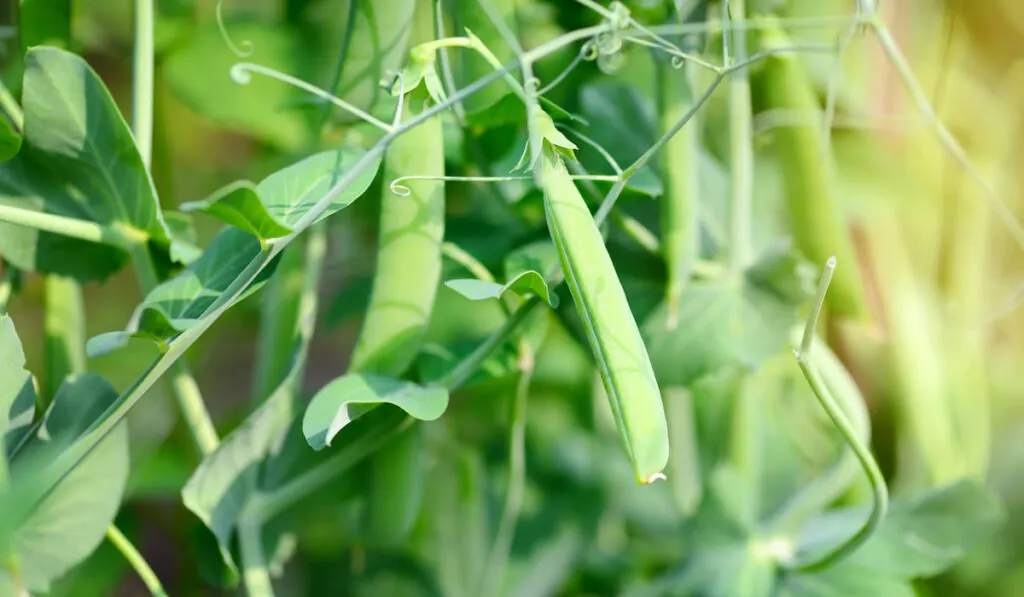
- Scientific name: Pisum sativum (garden pea)
- Height: 3-8 feet
- Preferred USDA zone: 3-11
Just like beans, peas are super easy to grow, and they do not need a lot of fertilizer, as they have some microbes to aid them with taking nitrogen from the air in their roots.
In a few months, peas will give you sweet seeds that you can use in your soups and salads.
To grow peas, provide a pole or trellis. Growing peas on the ground is not recommended because crawlers take up more space and are prone to pest attacks.
The point is that you can grow peas with ease.
5. Malabar Spinach

- Scientific name: Basella alba
- Height: Up to 10 feet
- Preferred USDA zone: 7-10
Here’s the leafy green that you need for that soup. This beautiful plant is very popular in Africa and Asia where it adds extra flavor to soups and stews.
Malabar spinach is also a vigorous plant that you can grow without giving it much attention.
This is a warmth-loving plant, so you need to grow it in a greenhouse if you live in a cold region.
Pruning your Malabar spinach plants can help them appear bushier and induces leaf growth, so remember to prune them often.
6. Melons
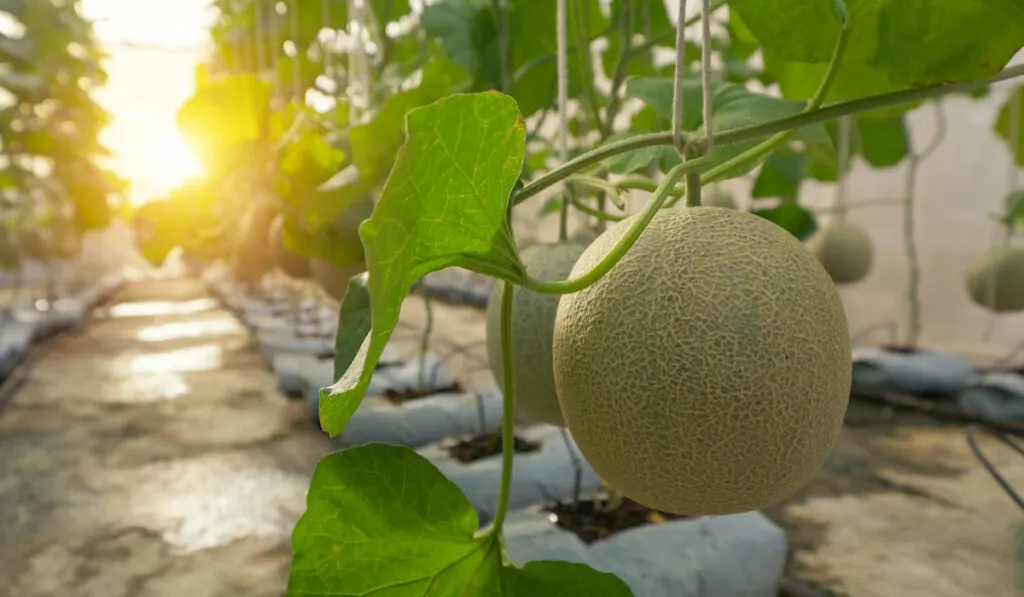
- Scientific name: Cucumis melo
- Height: 6-8 feet
- Preferred USDA zone: 4-10
There are many types of melons. Each variety will give you sweet, nutrient-filled fruits all along their vining plants.
The fruit of most melons is water-rich and has protein-rich seeds that you can use for different purposes.
Melons grow fast and will take over smaller spaces quickly; they will run along the ground or over structures. However, you will get more yield (fruit) when the leaves of your melons are closer to the sun.
Just remember to mist them regularly with water on hot days (in the morning or evening) so that they can stay hydrated.
7. Chayote
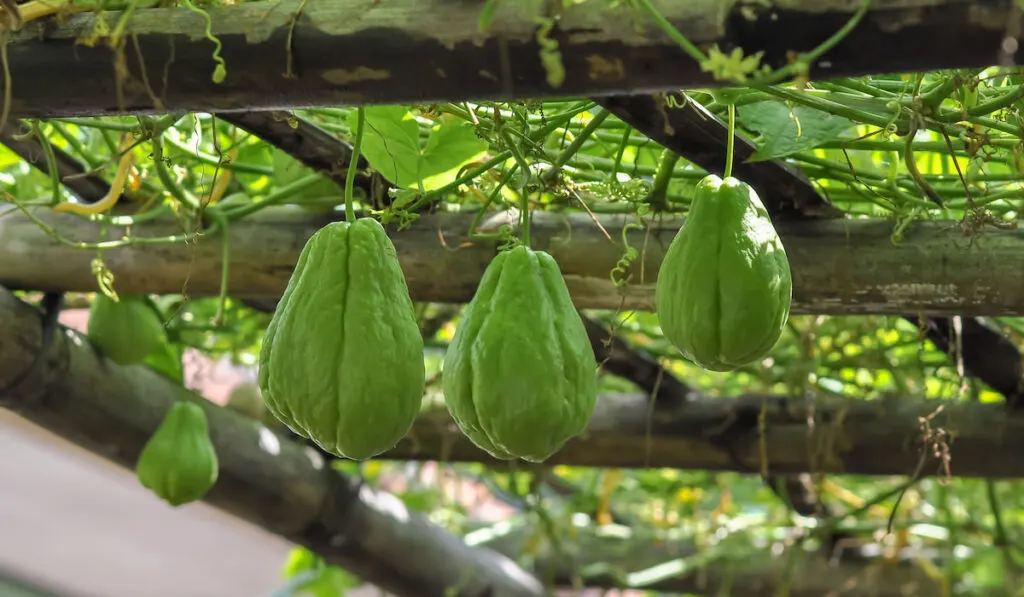
- Scientific name: Sechium edule
- Height: Up to 50 feet
- Preferred USDA zone: 7-10
Here’s a particular type of gourd that you can grow almost anywhere. Like every other type of gourd, chayote plants are climbers and are easy to grow so long as you get their temperature needs right.
These plants require a trellis for optimal growth.
8. Rocoto Peppers
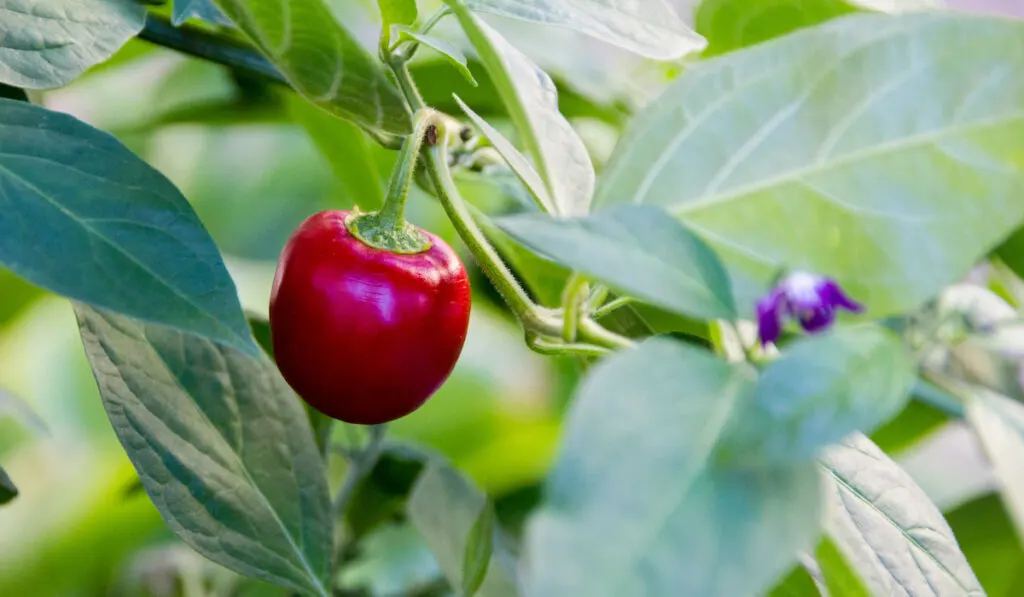
- Scientific name: Capsicum pubescens
- Height: Up to 15 feet
- Preferred USDA zone: 9-11
While most pepper plants stand firm, rocotos are climbers. Something cool about them is that they grow in a wide range of light exposure, so you can plant them in different parts of your garden.
However, note that pepper plants are more productive when you grow them in full sun and let them reach their full plant height and width.
Pruning Rocoto peppers can slow down their growth rate and expose them to a wide range of diseases.
Make sure that their fertilizer has a lot of phosphorus so that they can produce a lot of large peppers for you.
9. Pumpkins
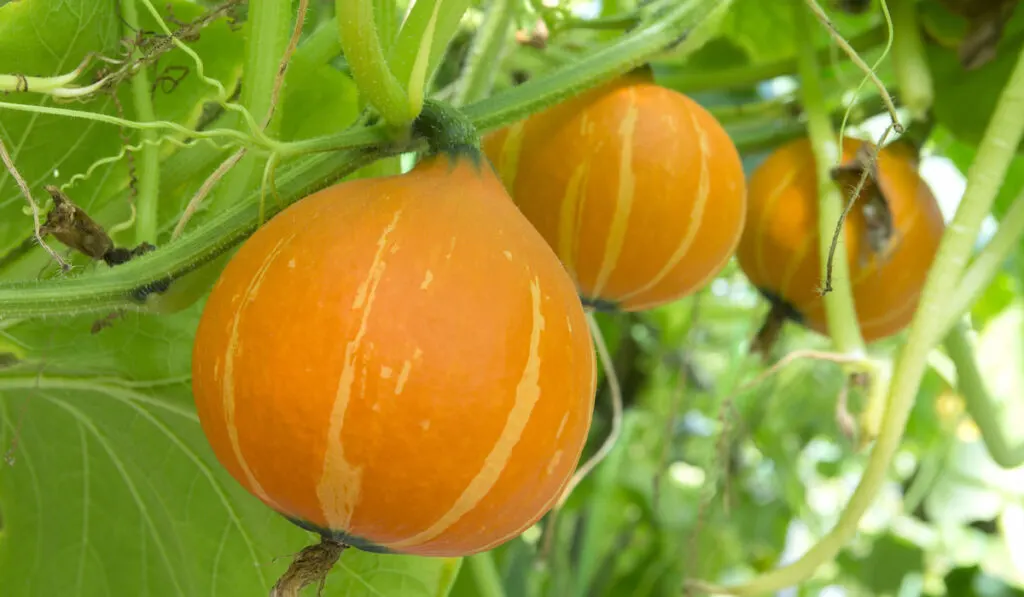
- Scientific name: Cucurbita spp.
- Height: 4-16 feet
- Preferred USDA zone: 3-9
Do you love pumpkins? Pumpkins are climbing vegetables that you should grow because of their sweet fruit and seeds.
Pumpkins are hardy, so you can grow them in a wide range of conditions without fear.
While pumpkins are climbers, you should control their height so that their fruits do not grow far from the ground.
This tip is important for plants with large and heavy fruits so that the fruits do not fall off the vine due to their weight. Remember to regularly water your pumpkins, especially when they’re fruiting.
How to Grow Climbing Vegetables
Growing climbing vegetables is simple, you just need to start with the easy ones and make sure that you grow them in the right conditions. When you have some experience, you can move to the more complicated ones.
1. Start With the Easy Ones

There are so many easy climbers that you can grow. However, three of the easiest are:
- Beans
- Peas
- Cucumbers
Beans and peas only require that you grow them in well-drained and nutritious soil.
When growing them, learn how to train them so that their tendrils (or vine shoots) can climb the trellis or structure properly.
Beans and peas grow quickly and will produce pods in no time.
As for cucumbers, they require regular fertilizing and will grow effortlessly so long as the temperature is just right.
You should also learn how to remove pests from these plants, as you’ll likely have some pest problems.
2. Always Consider the Growth Requirements of the Plants
A general rule for plants is to first check their preferred region (USDA hardiness zone) before you grow them.
After knowing if you live in a zone where you can grow your favorite vegetable, here are some requirements that you should also consider:
- Temperature: So long as you are living in the right USDA zone, you need not worry about temperature. However, it is important to know the temperature needs of your vegetables.
- Humidity: Humidity is important, as plants cannot regulate water properly when growing in a place with the wrong humidity levels.
- Water: How much watering does the plant need? Some climbers require regular irrigation while others can do just fine in slightly dry soil.
- Nutrients: Most climbers need a lot of nutrients such as nitrogen to grow their foliage. However, some, like beans and peas, do just fine without regular fertilizing.
- pH: The soil pH helps your plants to easily collect water and nutrients from the soil. Growing your plants in the wrong soil will negatively affect their growth rate.
This means that before you start growing a plant, you must learn about its growth requirements.
3. Provide a Trellis
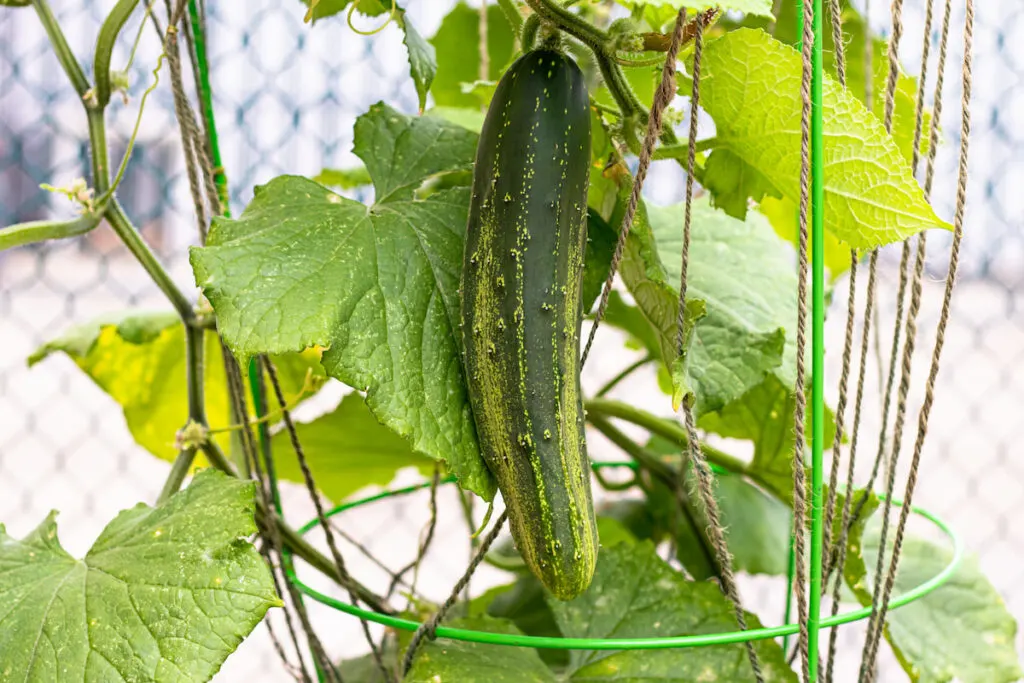
These vegetables are climbers, so they need something (a structure) to climb. Some structures that climbers like are:
- Fences
- Trellises
- Other plants
To grow a productive garden, you need something easy to set up that can give your vegetables enough space to climb. Trellises are an easy way to provide this.
Place the trellis in a spot that receives a lot of sunlight (or the amount of light that your vegetables need).
A trellis should not be too far from the ground (or pot) so that your vegetables can start climbing early.
4. Prune the Main Branch to Make the Plant Bushier
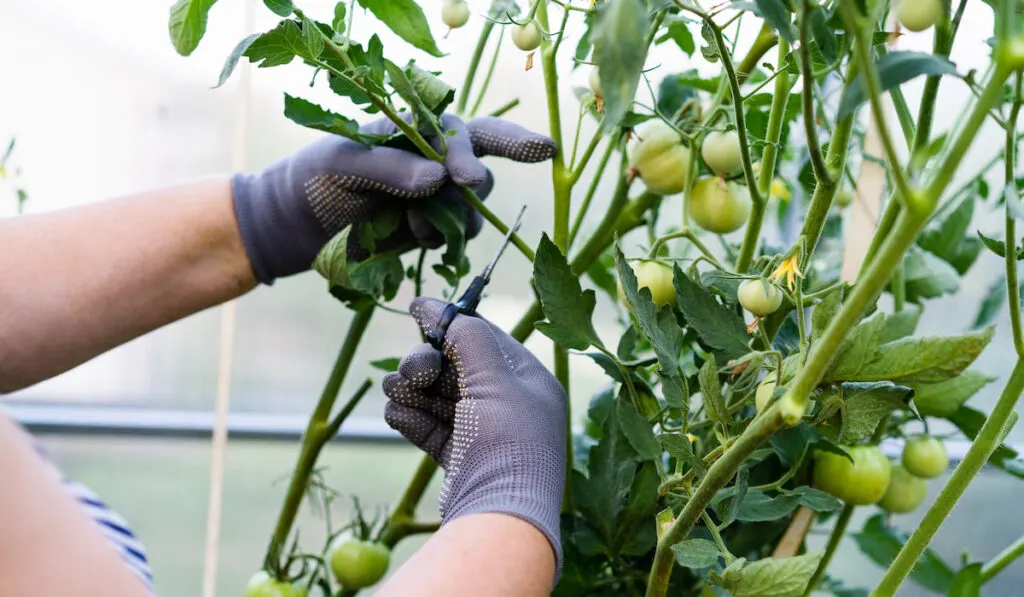
When growing some plants like pumpkins and melons, you may notice that their stem is very thin. It can affect the size of the leaves and make the plant unproductive.
Sometimes, the stem is thin because of a lack of nutrients in the soil. However, most plants do have thin stems and branches when young.
To help your climbers grow thicker stems that can hold more leaves and branches, you should cut off the very thin parts of the stem at a leaf juncture. You can leave 10-15 inches of the stem (close to the roots).
The stem will split into two and become fatter. Just make sure that the soil stays nutrient-rich.
Please use a clean knife when cutting the stem so that you do not expose the plant to infections.
5. Spacing Is Important
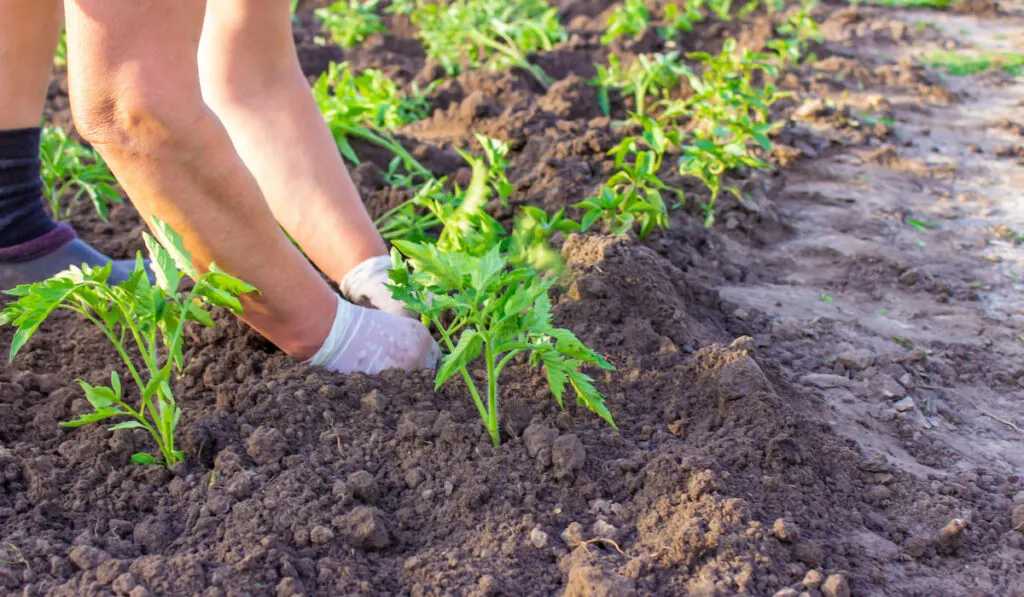
The thing about climbers is that they need all the space that they can get. Not having enough sunlight can reduce the growth rate of a plant and make the plant prone to infections.
This means that your climbers need a lot of space so that their leaves do not get blocked from the sun by other plants.
You should keep 15-20 inches between your climbers so that their leaves can properly spread in the trellis.
Spacing the climbers is not enough, though; you need to monitor their growth so that their foliage does not cover the leaves of others. Always reposition a tendril or vine that is growing out of place.
6. Water the Upper Leaves by Misting
One slight challenge in growing climbing vegetables is that the upper leaves will look very dry, especially if you are growing the plants in direct sunlight.
Most of the upper leaves will get sunburned and photosynthesis might stop in some.
To help the upper leaves of your climbers stay fresh and productive, water them regularly by misting them.
You can achieve this by spraying water on the leaves with your garden hose when watering the plants.
You may also choose to use a spray bottle. However, using a spray bottle to mist the leaves can be a lot of work.
7. Fertilize Often for Proper Growth

Your plants need a lot of nitrogen so that their leaves can flourish.
The only reason not to regularly fertilize beans and peas is that they are in a symbiotic relationship with some microbes that give them nitrogen.
For your climbers to grow, make sure that the soil is never nutrient-depleted. Note that while nitrogen is a major nutrient for your plants, you also need fertilizer that is rich in potassium and phosphorus.
You mostly need fertilizer when your climbers are in bloom or have started producing fruits. Just make sure that you make use of a product that is suitable for your plants.
Conclusion
Now you’d agree that your vegetable garden does not always have to look boring because there are so many climbing vegetables that you can grow, right?
Before you select a vegetable to grow, remember to reread and stick to the tips listed in this article so that you can grow your vegetables without problems.
Resources
- https://www.thespruce.com/vegetables-to-trellis-1403432
- https://www.bobvila.com/articles/climbing-vegetables/
- https://www.urbangardengal.com/climbing-vegetable-plants/
- https://eyouagro.com/blog/9-tips-on-how-to-grow-climbing-vegetables/
- https://flourishingplants.com/15-easy-to-grow-climbing-vegetable-plants/
